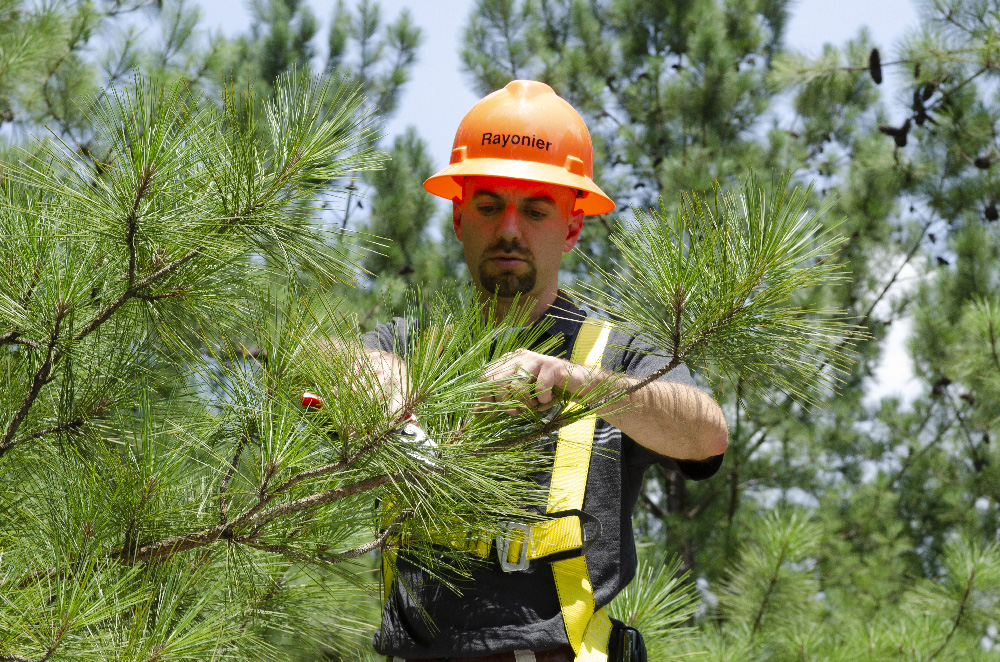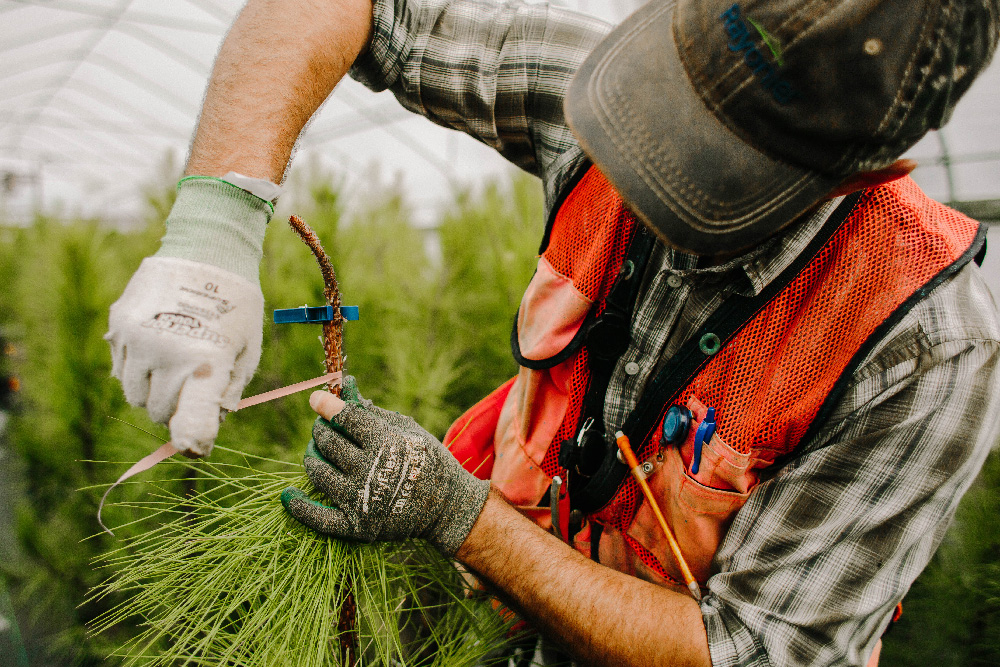Our genetics research team shows how grafting helps them save years of time in their ongoing quest to advance the quality of our trees.
GLENNVILLE, Georgia—How do you convince a tree it’s years—maybe even decades—older than it really is? Rayonier’s genetics research team does it by using a technique called top grafting.
The process shaves a massive amount of time off our advances in tree genetics research.

Rather than waiting for a new seedling to mature to seed-producing age (about 7 years), our seed production team grafts our most promising trees with older trees.
Top Grafting in the Treetops
Climbing into aerial lifts to reach the treetops, the team fuses shoots (branch ends) from genetically superior young trees onto the end of the older trees’ branches at the top of the crown. The young tree shoots then perform as though they are the age of the older trees.
This leads the promising new trees to produce seeds within the year, allowing us to plant and research how their progeny perform. The best performers from the seeds we plant will be selected for mass planting in our seed orchards.
Pot Grafting Promising Trees
Similar grafting techniques are then used on smaller rootstocks in a method called pot grafting. Once we select the ideal trees to use in an orchard, we want to get a whole lot of these trees in a short period of time so we can plant them and generate seeds that will be used throughout our ownership. We do this by attaching the shoots of the superior trees to potted trees, allowing our team to make hundreds of copies of the best trees in a matter of days. These will then be planted in the orchard, where trees are spaced farther apart to allow more branching—and thus, more pinecones—to produce millions of seeds.










Leave a Comment